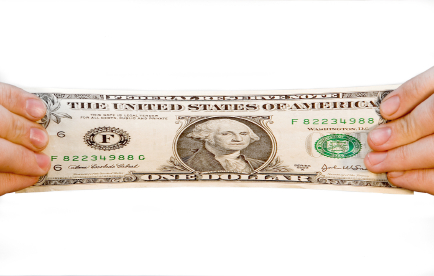End-of-the-world scenarios have been circulating forever. Some think the world will end with the Mayan calendar later this year. But I believe I've seen the real doomsday. Our species will simply fail to reproduce.
That's my conclusion from two news items. The first is from the U.S. Census Bureau, which announced a baby "bust" last fall. The census shows that, in 95 percent of counties across the United States, the share of the population younger than 18 was smaller than in 2000.
There are now more households with dogs than children.
The other piece of evidence is a book published this month from feminist author and blogger Jessica Valenti: "Why Have Kids?" A new mother herself at 33, she looks at the unhappiness among parents with young children and asks this very relevant question: Why do it?
According to interviews, Valenti concludes that it's the chasm between the idealized parental life and reality that causes so much woe. Americans glorify the mother alone at home raising kids.
It may be tempting to tut-tut Valenti and tell her that she'll get used to the lack of adult conversation and the jobs that require either 24/7 commitment or unemployment, with nothing in between. But her perspective may well spring not so much from her phase of life as from our time in history. Or, as we've begun to say about this economy that refuses to improve, her complaint is the new normal.
Raising children well has become increasingly difficult. I blame it on my generation - those of us who have teenagers, as I do, and older kids. Instead of banding together to wrest better policies from government and employers - or to create strong communities to assist one another - we've indulged ourselves in divisive "mommy wars." We have bickered about which is better, attachment parenting or free-range? Stay-at-home mothers or moms with paychecks? Opting out or having it all?
In 1996, we heard that it takes a village to raise a child, and we looked the other way.
Now, Americans are having fewer children. In 2007, according to the census, the average number of births per American woman was 2.1. That's just enough to hold the population steady. Last year, however, the birthrate fell to 1.9, the lowest in decades.
Have we decided that it's too difficult to go on - at least in the United States? France is still reporting somewhat higher birthrates. Perhaps the French crèche system of universal day care - which, by the way, supports an employment rate of 80 percent among French mothers - has a lot to do with providing young families with the resources they need to feel happy and hopeful enough to keep having children.
The reasons for the decreasing U.S. birthrate are many. The financial crisis of 2008 made parents fearful of another bill. The annual cost of center-based day care for an infant in 35 states - New York among them - is higher than a year's in-state tuition and fees at a four-year public college.
Wages have been falling for 40 years, which means that many household budgets require two, three or more jobs. Forget about quality family time with that schedule. One New Jersey town recently hired soccer coaches because it could no longer count on parents having the leisure to volunteer. Not only will we have fewer kids in the future, it looks like we can forget about fielding a team for the World Cup!
We could reverse these trends, if we believed that saving the species were important enough. We could fight for better policies. Or we could accept the situation and look on the bright side: It will be a lot easier to navigate store aisles without all those annoying baby strollers.
This essay was first published in Newsday.

